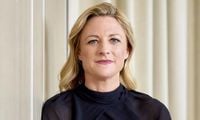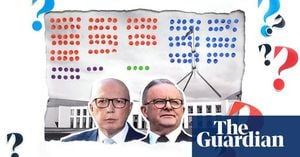The Australian banking landscape is undergoing a significant shift as the National Australia Bank (NAB) has announced further cuts to its term deposit interest rates, continuing a trend that began before the Reserve Bank of Australia (RBA) started lowering the cash rate in February 2025. This move has prompted urgent warnings for savers, as all of the Big Four banks have recently slashed their rates.
NAB has reduced interest rates across most of its term deposit offerings, with cuts of up to 10 basis points. Following the last RBA meeting, NAB, ANZ, and Westpac all cut their one-year rates by 10 basis points, while Commonwealth Bank made a more substantial cut of 20 basis points. According to Mozo personal finance expert Rachel Wastell, the situation is dire for savers, as all four major banks are now offering one-year rates below 4 percent.
Wastell noted, “At the end of 2023, the Big Four were dishing out 5 percent plus returns on term deposits, but now it's a race to the bottom - as we officially wave goodbye to the golden era of term deposits.” Currently, Westpac offers a 4 percent rate for its one-year term deposit, but only for customers renewing or opening a term deposit online. In branches, Westpac, NAB, and ANZ are offering a lower rate of 3.90 percent, while CBA offers 3.85 percent.
For savers seeking better returns, the top one-year term deposit rates are now available from Unity Bank and G&C Mutual at 4.65 percent. According to Mozo, savers who switch from the leading Big Four rate of 3.90 percent to 4.65 percent could earn an additional $188 a year on a $25,000 deposit and $75 more on a $10,000 deposit. Meanwhile, the major banks have also been trimming their savings account rates, with some bonus accounts losing up to 0.50 percent.
Looking ahead, all major banks anticipate that the RBA will cut interest rates at its upcoming meeting in May. Westpac's chief economist, Luci Ellis, stated that mortgage holders could “lock in” a May rate cut, regardless of the inflation data. She remarked, “Holding rates steady in the face of the global turmoil and softer momentum in the labour market – for the sake of 0.2 percentage points on inflation – would be very hard to explain.”
In a related development, three lenders recently cut 13 owner-occupier and investor variable rates by an average of 0.07 percent, while eight lenders reduced 159 fixed rates by an average of 0.2 percent, according to Canstar. Sally Tindall, Canstar’s insights director, highlighted that fixed rates continued to fall as lenders adjusted their expectations in light of the anticipated cash rate cut by the RBA on May 20, 2025.
The average variable interest rate for owner-occupiers paying principal and interest now stands at 6.51 percent, with the lowest variable rate for any loan-to-value ratio (LVR) being 5.59 percent, offered by Pacific Mortgage Group. The number of rates listed below 5.75 percent on Canstar’s database has surged to 646, up from 508 the previous week.
For borrowers who meet specific green home standards, Bank Australia is offering a three-year fixed rate at 4.94 percent. However, this rate is contingent upon customers owning an all-electric, solar-panelled new build with a NatHERS rating of 7.5 stars or higher.
While variable home loan rates have remained relatively unchanged, lenders appear to be holding off on making significant adjustments until the outcome of the next RBA meeting. The upcoming March quarter inflation figures, due on Wednesday, April 30, 2025, are viewed as critical in determining the RBA’s next steps. Tindall noted that many economists expect trimmed mean inflation to land within the central bank’s 2–3 percent target band for the first time since the December quarter of 2021.
In addition to the changes in interest rates, the Australian Dollar (AUD) is also under pressure amid expectations of another 25 basis point rate cut by the RBA in May 2025. The AUD is edging lower, trading around 0.6420 on April 29, 2025, after registering more than 0.50 percent gains against the US Dollar (USD) in the previous session.
Recent developments in US-China trade relations have influenced market sentiment, with US President Donald Trump indicating a willingness to reduce tariffs on Chinese goods. However, a spokesperson for the Chinese embassy denied any current negotiations regarding tariffs, urging the US to “stop creating confusion.” Traders are now focusing on Australia's upcoming inflation report, which could significantly influence RBA policy expectations.
The US Dollar has faced challenges due to weakened investor confidence stemming from Trump's unpredictable trade policies. The US Dollar Index (DXY), which measures the USD against six major currencies, is trading higher but has struggled amidst concerns over the trade war.
Westpac has forecasted that the RBA will lower interest rates by 25 basis points at its May 20 meeting. The RBA has been highly data-dependent in recent quarters, making predictions beyond the next meeting difficult. However, the global economic landscape and softer domestic indicators have shifted the risk outlook towards the downside.
As the Australian banking sector continues to navigate these changes, savers and borrowers alike are urged to stay informed and consider their options carefully. With interest rates fluctuating and economic indicators shifting, the coming weeks will be critical for both the RBA’s decisions and the financial well-being of Australians.





